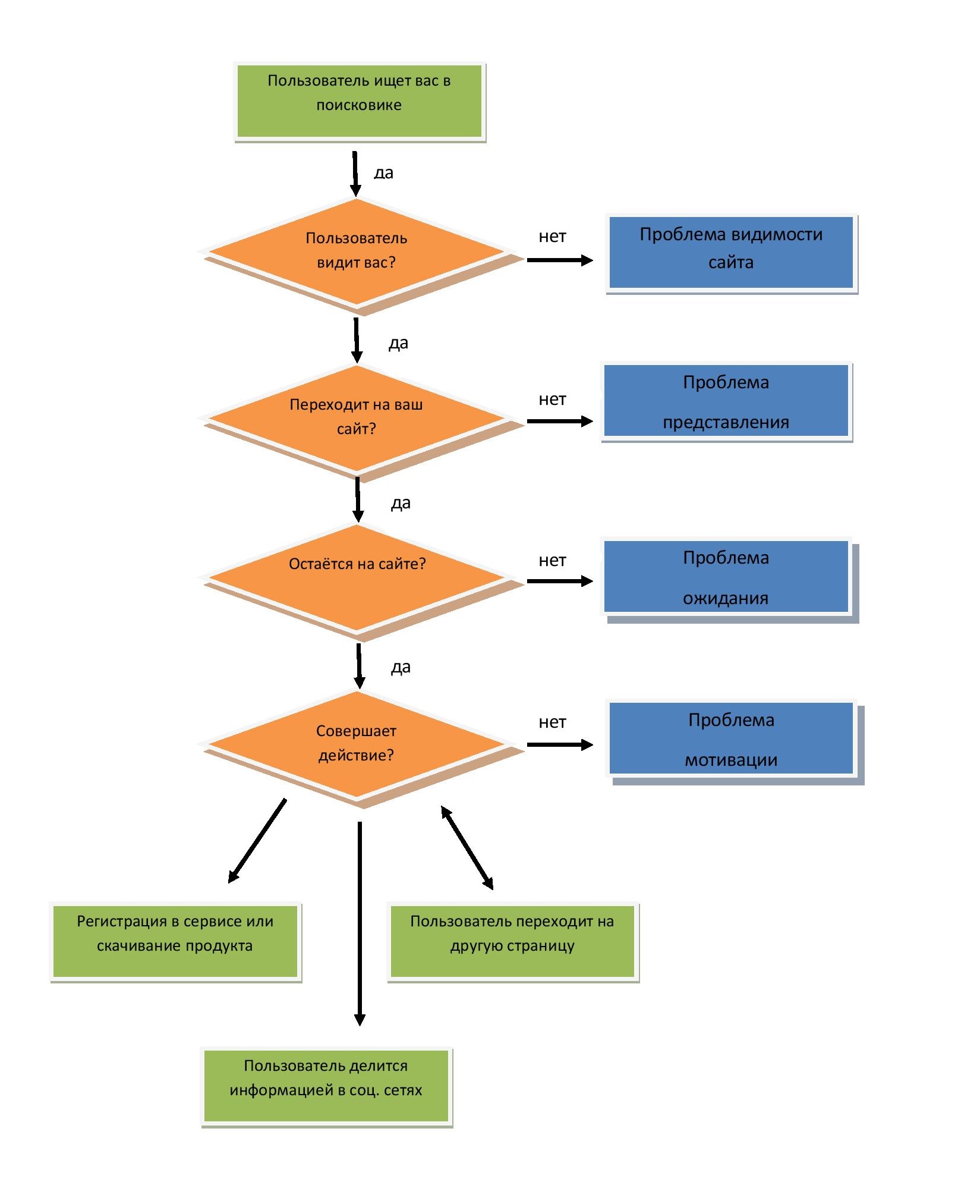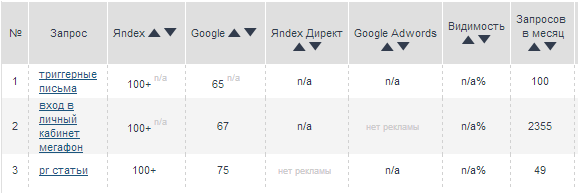Behavioral factors: monitoring and troubleshooting

Observation of behavioral factors is another way to look at your site through the eyes of users through the lens of analytics. A complex of data, formed from behavioral factors, gives information about how sensibly the site is made, how useful and necessary it is, and whether the site has a future in the foreseeable future. In addition, these data make it possible to evaluate in a qualitative equivalent the information that you give out to the outside world. Something in it in everything is similar with the rating on Habré - the rating created by the users themselves, only looks so far a little more complicated and not so transparent.
')
Sites with successful behavioral factors are easy to find. When we google something, now the first thing we see is them. Having started to take behavioral factors into account when building search results, search engines hope to rid the Internet of “optimizers” and pass it on to those who have something to say. However, even if you have something to say, say it does not quite guarantee your site a stable life. And the point here is that the search algorithm cannot read your text, it only collects data on the users' reaction to it. This reaction is quite specific and is expressed in several parameters, most of which can be controlled.
Behavioral factors include:
• Transitions to the site from the search and number of views
• Duration and depth of the session (how many pages looked, how long were on the site)
• Return from site to search
These are indicators that describe user actions. How exactly these factors manifest themselves and what can we judge on the basis of the data obtained can be represented in the form of a small scheme:

As you can see, the user behavior at each step can signal a specific problem in the materials of the site: to detect and fix these problems is our task.
Theater starts with a hanger: Visibility
Behavioral factors begin where the user's path through the site begins - in a search engine.
There is nothing easier than checking whether users see the site and, if they see, how far. We take any solution that provides a free position monitoring system - for example, SERPClick .
The site of one small company in the analysis of visibility looks like this:

This is a good site, with a portfolio and interesting analytical articles, but users will never find it, because the search engine does not know what is on this site: everything is just piled up there and it’s impossible to understand what the site is about. When you write material to improve behavioral factors, the main thing is information that is interesting to the user. But in order for users to find this material, when planning their articles you need to take into account what users are looking for on this topic.
Choose me! - Representation
What users are looking for on this topic is another aspect of the site's visibility - its snippet. Here you need to think very well: what the user was looking for when he typed something in the search and try to give the right answer in the header that is visible in the snippet. For the sake of justice, if here you are “screwing up” - Google may try to correct the situation and choose a different title for display to match the request. But then problems may arise already with waiting - see below. In addition, Google snippets can reflect an “image to attract attention” avatar (for this, attach your G + to your site).

You can also add other useful information to the snippet. The image in the snippet can be the logo of the company, if the company has G + and it is attached to the texts on the site. In the case of Yandex - “do not forget to fix the favicon”:

Just as the theater begins with a hanger, your site begins in search. Behavioral factors will begin here: to increase the chances of a good user response, you need to be visible, properly organized, recognizable and useful from the very beginning.
Justify the wait

And this is not all! You have created an interesting material, thought out what users are looking for, attracted attention. And the user came ... and immediately left. Unnecessary user expectations provoke appropriate behavioral factors. Having collected them about your publication, the search engine will remove the text away so as not to upset users in the future. The alarm can be seen in analytics, where it makes sense to look in 3-4 days after the publication - an indicator of the time spent on the site, the time to view one page, the time spent on one visit (session).
The “Content” tab in the Yandex Metric or similar to it “Login pages” in Google Analytics are the data for each specific text:


Conclusion: thinking over the publication on the Internet, you need not only to attract the attention of a person, but also to give what you are looking for. If you already thought about this when creating a header that is reflected in the snippet, then you probably also tried to write the text in such a way as to give the user the information he was looking for. If you do not succeed - try to change the text as quickly as possible, because with a large number of users who left you quickly, the search engine will remove your text away - thus the behavioral factors vote for the fact that you published "some kind of garbage." Solution: check analytics 3-4 days after publication. A good time on the page - an average of about two minutes.
Further user actions
From the point of view of behavioral factors, of all the possible further actions of the user on the site, the most desirable for you is that he has looked at least a couple of pages. In analytics, this is controlled by two parameters:
• indicator of the number of page views per visit (session depth).
• bounce rate is the percentage of users who are limited to one page.
Session depth and failure rate are also taken into account when collecting data on behavioral factors on your site. Therefore, it is not enough to do just good stuff - you need to motivate the user to perform one of the possible actions on the site.
Solution: a lot of different, show imagination. The simplest thing is to add to the material a list of articles “read more on this topic” or suggest downloading a file on the subject of the material, watch the video. In short, give the user a chance to live a little online on your site. But - with benefit. So, no matter what you offer, it must meet the user's requests.
So, to answer the question whether you are writing something interesting, you can objectively answer in numbers. Let's give an example.
Over the last month, 15 new pages of materials have been published on my site:
• They were found 7 thousand people who came to the site from the search
• 60-80% of them went more than one page.
• Average time on the page - about 2 minutes
• “Failure percentage” does not exceed 20% for 10 pages out of 15
• 3 pages out of 15, according to which I was not satisfied with specific indicators, we improved purposefully, knowing what indicator we work with. We will evaluate the results in a week.
findings
The quality of site materials is easy to monitor in analytics through behavioral factors, as well as to influence behavioral factors purposefully, improving specific indicators for specific materials. The abstract concept of "good text" is replaced by specific data on the success of text from live users in real time.
Source: https://habr.com/ru/post/225411/
All Articles